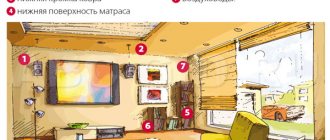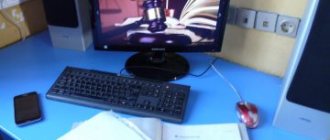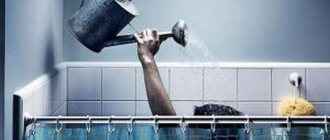If mold appears in your apartment, it is important to know where to go and what authorities to call and write to. The presence of black fungus colonies in residential areas is dangerous to human health. It grows and reproduces with the help of spores, which are carried by wind currents throughout the apartment, easily enter the respiratory tract of residents and poison the body. Because of this, intoxication develops, which stimulates a decrease in immunity. Against this background, colds and pneumonia occur more often. Stomatitis, nosebleeds, conjunctivitis, and thrush are not uncommon. Often, those who live in an apartment with black mold develop allergies. It is accompanied by a constant cough and runny nose. Over time, bronchial asthma can develop. But the most dangerous thing is liver or lung cancer. There are cases where infection with black fungus led to serious changes in the skeletal system. The person has completely lost mobility and becomes disabled. In view of this, you need to get rid of mold in your apartment as soon as possible.
Causes of black fungus
Invisibly, fungal spores are always present in the air. They exist in a latent “sleeping” state. As soon as an optimal environment for life is formed around, Aspergillus Niger begins to actively reproduce. This happens if a stable temperature is established inside the room (+20 degrees and above), humidity increases to 80%, ventilation is completely absent, and a large amount of condensation forms. For normal existence, the fungus needs food. It can be any organic base: dust, food, plaster, concrete, textiles, stone.
There are special “vulnerable” places in an apartment or house where all provoking factors can come together at once: the basement, bathroom, kitchen, corners of adjacent walls, window sills and window openings.
When black mold appears, a specific smell immediately appears in the house, and black spots appear on the affected surface. They are constantly increasing in size. Gradually, the fungus invades new territories, actively multiplies and releases spores into the air, which scatter throughout all rooms and enter the human body through the respiratory tract - ideal conditions for the life of the pathogen.
Is mold a significant drawback?
You will have to prove separately whether mold or high humidity could be a significant defect.
By law, a significant defect is an irreparable defect or defect that cannot be corrected without disproportionate expense or time. Either it is detected repeatedly, or it appears again after it has been eliminated. Accordingly, a significant violation of the requirements for the quality of a shared construction project is a non-compliance of the shared construction project with the terms of the contract, the requirements of technical regulations, design documentation and urban planning regulations, as well as other mandatory requirements.
Read also: Useful helpers in the kitchen
Thus, in order to understand whether this deficiency is significant or insignificant, it is necessary to establish the reasons. The cause may be a remediable problem. For example, workers violated the technology when applying plaster, or simply did not dry the wall - this is an insignificant flaw. It's easy to fix. And if you unilaterally refuse to fulfill the contract, the developer can challenge such refusal in court. And the court does not recognize the contract as terminated.
But violations of building codes, design standards for external walls, thermal and waterproofing, and the quality of work on sealing seams and joints are all significant shortcomings. With them, you can refuse to fulfill the contract unilaterally, and the court will support you.
Here is an example from Smolensk. A participant in shared construction had claims against the developer because mold and moisture had formed on the walls. The developer argued that the shareholder was to blame himself, as he improperly operated the apartment and did not ventilate the premises. An independent examination found that the developer violated building codes when he installed the walls and insulated the exterior walls, and that these deficiencies could not be eliminated without major repairs. The court found the shortcomings to be significant, and the contract was terminated, ordered the return of the money and also assessed a penalty.
Where to go if mold appears in an apartment
In apartment buildings, fungus most often appears on the first and second floors. The reason is faulty ventilation or poor heating. When these two factors are layered on top of each other, the level of humidity increases, which gives impetus to the activation of Aspergillus Nigeria.
Ventilation and heating services are provided by the Housing Office. The first thing you need to do is call this organization and call specialists or fill out an application in writing, send it by email to the government services website or through the “MyDom” service. The management company must get in touch, identify the source of the problem and find out what caused the mold to appear, and whether this circumstance is related to the tenant’s poor care of the apartment. The tenant, for his part, must prove to the invited specialist that he:
- constantly ventilates the premises - air circulation is not blocked;
- does not prevent the penetration of thermal air into the apartment - the heating radiators are open and work properly, but do not heat well;
- properly grows indoor plants, if any;
- regularly cleans the bathroom and treats surfaces with fungicides;
- Maintains plumbing fixtures in good condition.
It is advisable to contact the regional hygiene center or SES before the arrival of the authorized management company, pay for the service and measure the humidity level in the apartment. This can help prove that the problem of fungus is not related to improper use of the apartment.
The visit of a representative of the management company should not be just for show; it is important to force him to draw up an act and reflect the existing problem in it. It is useful to invite neighbors and ask them to examine what happened and put their signatures on the report. It’s good that if one of the relatives films the meeting on video, the path in the frame will definitely be proof of the current date.
If the housing and communal services have not responded to the appeal in any way, and the mold in the apartment continues to grow, you need to complain to a higher authority (state housing inspection) and point out the inaction of the utility service. The issue is resolved much faster if a written complaint, certified by neighbors, is sent by mail to a SanPin inspector.
The claim must be reviewed within thirty days. After a decision in favor of the apartment owner, the utility organization has forty-five days to resolve the situation. If no supervisory authority could help, you should go to court. If there is complete confidence that the cause of mold is cracks in the walls of the house, a bad roof, broken general ventilation, you can win the claim, assign all legal costs to the management company, and achieve moral and material compensation.
Knowledge about why mold appears on the wall in an apartment, where to go if it is found, will help solve the identified problem once and for all.
Ventilation does not work
Ventilation is most likely one of the most important systems in an apartment building. After all, when it works properly, no one even thinks about its existence. But as soon as the operation of the exhaust system stops, this fact is immediately evident. Smoke from cooking does not come out of the kitchen, the windows fog up, and an unpleasant smell remains in the bathroom. Moreover, there is a possibility of fungus. Paragraph 5 of the Rules and Standards for the Technical Operation of the Housing Stock stipulates that chimneys and ventilation must work normally.
By the way, few people know how ventilation in an apartment should work. It is not difficult to check its work. Open the window slightly, and then place a sheet of thin paper or a burning lighter on the ventilation duct grille. If the sheet is pulled towards the grate, and the flame does not burn vertically and leans towards the hood, then the ventilation is working properly. If the sheet is not pressed down and the flame burns evenly, then you have a problem.
There is one caveat with fire from a lighter. Sometimes gas accumulates in the ventilation shaft, so the method of checking with a sheet of paper is safer.
One of the most common causes of non-functional ventilation is a simple blockage. Contact your housing department inspectors.
How else is it possible to check the ventilation for functionality and what to do in case of a breakdown, the following video tells:
Where to complain?
First of all, if the ventilation is not working, you should send a letter to your Housing Office. But if its employees do not want to do their job, for which, by the way, you regularly pay, you need to contact the housing inspector. This government organization was specially created to supervise public utility companies.
Don’t forget about Rospotrebnadzor together with the Sanitary and Epidemiological Station. These organizations are obliged to respond to your appeal. The main thing is not to forget to record all the documents coming from you, otherwise they will be lost in the depths of the bureaucratic machine.
How to file a complaint?
The complaint looks like this:
- We write the name and contact number in the upper right part of the sheet, do not forget to indicate the registration address;
- below in the middle is written “statement of violation of rules for the maintenance and repair of residential buildings”;
- below is the text of the complaint, indicating the address;
- after this, we turn to the inspector with a request to conduct an inspection, issue a resolution and punish the perpetrators;
- sign and indicate the date.
You can see a sample application in case the ventilation does not work below or.
Statement about non-functioning ventilation
Statement about non-functional ventilation - 1
Statement about non-functional ventilation - 2
Statement about non-functional ventilation - 3
Procedure
Let's summarize all your actions if the ventilation suddenly stops working:
- calling a housing department specialist;
- if it refuses, we draw up a report (possibly without an engineer from the management company);
- we write a complaint to the supervisory authority;
- we fix its feed;
- we wait a month (as required by law);
- We monitor for 45 days how housing office employees eliminate the malfunction (this time is allocated to them by law).
- If after this period nothing has been done, we go to court.
Safe products and tools
While the settlement process is underway, you need to start fighting the consequences of fungal infection on your own. To do this, it is better to use the most effective removal products. All of them are highly toxic, so before work it is important to use the necessary protective equipment - put on a gown, gloves, mask, goggles.
When mold is located on specific items that can be taken out and thrown away, they need to be disposed of. You should send old wallpaper, moldy textiles, and contaminated putty to the trash. Areas affected by fungi can be treated with chemicals, which are always on hand.
Chlorine corrodes mycelium well. When processed, its powder easily penetrates into deep crevices and cracks. This product is most suitable for disinfecting rough surfaces (walls, concrete).
It is better to remove fungus from the surface of a tree with ammonia diluted with water. This product can also be used to treat joints between tiles.
If mold growth causes a strong odor, you can combat it with lemon juice and acetic acid. The solution will kill the mycelium itself, prevent its growth in the future, and eliminate the specific aroma.
When there is a need to keep pets as safe as possible, contaminated surfaces should be treated with hydrogen peroxide.
There are special products (fungicides) on the household chemicals market; their use helps to quickly and efficiently solve the identified problem. It is difficult to work with them, so it is safer to invite specialists working in specialized companies to treat the premises.
All products are applied to the surface using brushes after the affected part has been completely mechanically removed. The tile seams are cleaned with a sharp knife.
Main types of mold
There are quite a lot of pathogenic fungi known, and that is why the signs of the presence of mold in a living space are so varied.
There are the following types of pathogenic fungus:
- Black Aspergillus. This type of fungal colony is rightfully recognized as the most dangerous for the human body. This microorganism causes multiple lesions in the respiratory tract, triggers an enhanced immune response and causes a number of allergic diseases. Colonies of black aspergillus can be found on the drum of a washing machine, between the grilles of an air conditioner or split system. Such a favorite localization contributes to the rapid and massive spread of the infectious agent throughout the room. Very often mold is found in air humidifiers, in the seams between tile elements. Mold can have the appearance of a ring-shaped coating with a predominantly black, sometimes gray color.
- Today, fuming aspergillus is also known. You can recognize this type of fungus by its characteristic fluffy coating on walls, furniture facades, and on food products. Such a pathogenic fungus is capable of destroying red blood cells in the bloodstream and causing severe allergic reactions.
If you notice a gray or olive-colored stain on a wall, fabric or food, you should definitely get rid of the pathogen. This type of fungus is called Alternaria alternata.
This causative agent of a number of diseases loves wooden surfaces, especially without access to light and cold. Fungal toxins can settle on the skin, mucous membranes, and penetrate the respiratory tract and digestive tract.
Fungal spores cause the development of bronchial asthma, chronic bronchitis, a number of dermatitis, and allergic reactions.
How to prevent mold in the future
The occurrence of fungus is easier to prevent. Knowing the causes of mold, this will not be difficult to do:
- ensure good ventilation in the house;
- maintain an optimal humidity level (no more than 60%);
- eliminate any water leaks in a timely manner;
- wipe all flat surfaces daily with a damp cloth;
- Avoid the formation of condensation on windows and walls.
If you systematically prevent the formation of mold in your apartment, the question of where to go if it appears will be completely removed.
Application and act
If you have checked all the sources of probable mold in the house and are finally convinced that the housing office is responsible for the appearance of mold in the house, you can take the following legally prescribed actions:
- Draw up a report with a member of the management company about the problem that occurred. Don't forget to also involve your neighbors as witnesses and collect signatures.
- Write a letter of complaint to a higher authority if the Housing Office has not responded to your application.
- Send a complaint about your problem in writing and with the signatures of witnesses by mail to the SanPiN inspector.
- Wait for a response from the inspection services within the legally prescribed period of 30 days to resolve your problem.
- Wait for the court order and the arrival of specialists from the housing office to clean your apartment and eliminate the problems that caused the house to become contaminated with fungus.
Prevention
After cleaning the apartment from mold, it is necessary to ensure that it does not form again. To do this, there are a number of measures that will help protect your home from the appearance of fungus in the future. Necessary preventive measures:
- Regularly check the ventilation in the apartment and ventilate it systematically.
- Conduct thermal insulation of balconies or loggias.
- Ensure proper heating in the apartment.
- Provide wet cleaning. You can also treat the walls with a small amount of vinegar or citric acid.
- Proper care of home flowers, regular checking of the soil.
- Timely washing of clothes. This will help prevent the proliferation of pathogenic microorganisms during the most favorable period for them.
- Proper care of pets.
- Constant monitoring of temperature and humidity levels in the bathroom, including periodic cleaning of the washing machine from accumulated dirt.
This is interesting: Room temperature is how many degrees is normal and what deviations are allowed
The main preventive actions are constant ventilation of the apartment and regular cleaning. Even if problems with ventilation or other systems are not corrected in a timely manner, such actions will help protect the apartment from the appearance of a fungus dangerous to health.
If problems arise with home maintenance and the housing and communal services do not respond to troubleshooting, do not be afraid to contact higher authorities, whose purpose is to control the work of utility services. They will help get rid of the inaction of the house management company, and will also help ensure comfort in your own apartment .
Useful video: How to deal with mold in an apartment yourself
Drawing up a complaint
Before filing a complaint, it is necessary to conduct a certain examination. First, you will need to draw up an act on the condition of the residential premises, which must be signed by the owner of the apartment, as well as a representative of the management company.
If no one from the management company appears, then the act is drawn up in the presence of two witnesses who also sign. Then the humidity level is checked. This is a paid service provided by regional hygiene centers and SES. If the utility company is proven to be at fault, the costs incurred will be reimbursed.
Sample application (complaint) if mold appears on the walls of the house
In accordance with paragraph 31 of the Rules for the provision of utility services to owners and users of premises in apartment buildings and residential buildings adopted by Decree of the Government of the Russian Federation of May 6, 2011 N 354, an organization providing utility services to the consumer is obliged, independently or with the involvement of other persons, to carry out maintenance of intra-house engineering systems with the use of which utility services are provided to the consumer, as well as recalculate the amount of payment for utility services, including in connection with the provision of utility services of inadequate quality and (or) with interruptions exceeding the permissible duration. In accordance with the Sanitary and Epidemiological Requirements for Living Conditions in Residential Buildings and Premises (SanPiN 2.1.2.2645-10), heating and ventilation systems must provide acceptable conditions for the microclimate and air environment of the premises, while the relative humidity in living rooms should not exceed 60% in cold season and 65% in the warm season.
Please note => Benefit for retirement of a construction foreman
Ways to combat mold
Even the presence of dense and massive plaque on the surface of walls, flooring and in the spaces under baseboards should not frighten apartment owners. First of all, you should prepare a respirator or a high-quality mask to protect the respiratory tract.
You will also need glasses and gloves. Next, the room is cleaned according to the following scheme:
- All visible plaque is carefully removed from the wall with a spatula or spatula. The removed particles of fungal colonies should be immediately packed in a plastic bag to avoid the spread of spores.
- A specialized solution with an antifungal effect is poured into a container with a spray bottle. Such drugs have sufficient concentration and can stop the development and cause death of pathogenic microorganisms.
Sometimes powerful oxidizing agents are used in everyday life, for example, classic bleach, acetic acid, concentrated citric acid.
Oxidizing agents destroy the tissues of the fungus, causing its death. As an alternative, vegetable oil can be used to coat the mold surface, preventing oxygen from entering.
Trial
If no government agency has helped you solve the problem, file a claim in court. You will be able to compensate for the damage if you prove that the culprit in the occurrence of mold is the Criminal Code. Otherwise, you will have to compensate for all costs in court and through expert assessments.
As practice shows, most of these cases are settled in favor of the plaintiffs. The main thing is to thoroughly prepare the evidence base, supported by documents.
An exception to all proceedings are disputes between owners of apartments in new buildings and developers. Often houses are handed over without finishing, and mold appears on baseboards, wallpaper, and panels over time due to poor quality repairs.
Learn more about how to submit an application to the management company or the Housing Inspectorate
Rospotrebnadzor (booth)
The Office of Rospotrebnadzor for the Republic of Khakassia informs about the increased number of requests from citizens regarding the state of the environment and living conditions of the population. Most of the complaints concern unsatisfactory living conditions in residential buildings and premises. To combat mold, it is advisable to use biocidal preparations. When choosing biocidal products, you must pay attention to the hazard class, which should not be higher. When reading the instructions for use, you must take into account the possibility of using the product in domestic premises. When removing mold, it is recommended to treat the entire room, not just the affected area. After all, fungal spores are present in the air of the room, which has affected areas of increased contamination.
Free legal assistance
All major repairs can only be carried out in agreement with the payers: apartment owners, based on the decision of their general meeting. A situation is possible in which the owners decide that the facade of the house requires repairs, but the housing office (ZhEK) does not want and does not plan to do this before the deadline for major repairs. For example, a claim against a management company should be filed for violation of consumer rights. This corresponds to the nature of the legal relationship and exempts the plaintiff from paying state fees. There are other nuances. I myself went all this way, won the court, received compensation for mold removal work and compensation for repairs. During the trial, a judicial construction, technical and mycological examination was appointed and carried out.
How to get rid of it
There are various means to get rid of mold in an apartment. The affected areas should be treated with special antiseptics, which are rubbed in with a brush or sprayed.
It should be remembered that any chemical solution will only destroy the problem locally, but after some time the mold will appear again.
To get rid of fungi and their spores forever, you need to:
| Fix all leaks in the house | Which causes high humidity |
| Set up a ventilation system | The easiest way to ventilate a room is a breather - a compact ventilation system that can easily be hung on the wall |
| Maintain thermal balance in the room | Eliminate sources of heat leakage by sealing the holes with sealant |
Air conditioning will not eliminate the appearance of spores in the apartment. It only helps lower humidity and cools the room, but it does not purify the air, but circulates it in a circle, along with mold spores.
Treatment with chemicals
The surface of the walls should be treated with a roller coated with an antiseptic. It is recommended to purchase special solutions designed to eliminate fungus in the apartment.
Fungistatic agents are especially effective. They not only remove stains, but also prevent mold from appearing in the future.
Chemicals:
- Primer Caparol Capatox.
- Spectrum is a fungicide.
- Triora – bioprotection.
- Super Base is a deep penetration primer.
- Atlas mycos is a concentrated product.
After the wall has been treated with a chemical, it should be dried thoroughly, and then the product should be applied again.
If the surface is highly porous, re-application is carried out after a few days.
Video: everything you need to know
Folk remedies
Compared to chemicals and antiseptics, folk remedies are not highly effective, but they can be used for minor infections.
Main types:
| Ammonia | It can be used to remove fungus on tiles, glass and tiles. Alcohol is mixed with water in proportions of 50:50 and sprayed onto the surface. The product should be left for 2-4 hours, then rinsed off. It should be noted that ammonia gives off a pungent odor, so it is better to leave the apartment during treatment. Mixing ammonia with bleach is strictly prohibited! |
| Bleach | It may be effective due to the presence of sodium hypochlorite in the composition, which is harmful to fungus. It can only be used to process smooth, hard surfaces - tiles and glass. Mix one part bleach with 10 parts water and then spray. The room must be ventilated |
| Vinegar | Apply to a wall covered with fungus in its pure form. You need to leave the product for one hour, after which the wall is washed |
| Tea tree oil | One part of the oil is diluted in 50 parts of water. Using a spray bottle, the mixture is applied to the moldy area. The wall should dry naturally |
| Borax | One of the most effective means in the fight against wall infestation. The substance must be diluted in water in proportions of 1:10. The drill is applied to the walls with a stiff brush |
Mold should be destroyed as quickly as possible after it appears, as it can be hazardous to human health.
Since mold tends to reappear, treatment should be carried out regularly.









